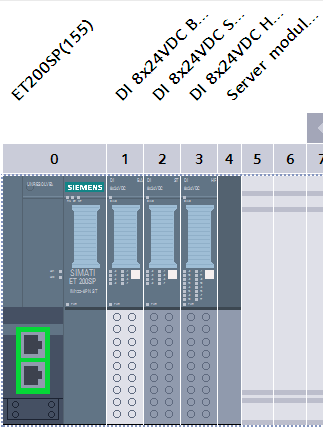
Cost or function? That's the choice many design engineers have to make when it comes to I/O. With products like Siemens ET200SP Remote I/O, you can strike a balance between cost and function for the best possible result.
Finding the Features You Need
Many Siemens Bus Couplers come in two or more versions with respective features. High Feature Bus Couplers allow a larger amount of I/O on a particular drop, for instance, than the Standard variant of the same module. At the individual I/O module level, these variations are more prevalent, and depending on the application requirements, can give the design engineer the means to optimize the cost of the system against the features needed.
To draw the distinction, here is a quick comparison of an 8-point digital input module (24VDC) in Basic (BA), Standard (ST), and High Feature (HF) versions.
Common features for all modules are diagnostic events associated with a module failure, the ability to disable individual channels, and individualized channel input delay (de-bounce) times. The real differentiators are how much detail is available for additional diagnostic situations.

The 8xDI BA module (Basic) offers module diagnostics in the form of indication of lost supply voltage.
The 8xDI ST module (Standard) also offers lost supply voltage diagnostics. It adds short circuit to ground and wire break diagnostic indications if so desired (select to activate). These are an all-or-none selection, meaning that you enable short circuit and/or wire break detection for all of the inputs or none of them.

Using the Standard series 8xDI 24VDC card as a cost benchmark, the Basic (BA) version runs about 5% lower in cost and the High Feature (HF) version runs about 15% higher in cost. Other types of cards will follow suit in general direction, though the cost difference will vary depending on the module.
Here is an abbreviated chart from Siemens on the breakdown for the I/O modules in the ET200SP family:
|
Basic (BA) |
Standard (ST) |
High Feature (HF) |
High Speed (HS) |
|
Optimized for price |
Optimized for low stock keeping |
Optimized for rapid error location |
Optimized for short reaction times |
|
For basic requirements |
For standard requirements |
For high requirements |
For rapid data exchange |
|
Basic diagnostics |
Diagnostics per module |
Diagnostics by channel |
Extensive diagnostics |
|
Field of application |
Flexible utilization |
Flexible utilization through high adjustability via parameters |
Flexible utilization through high adjustability via parameters |
|
Alternative operating modes and extended module functions |
Alternative operating modes and extended module functions |
And here is an abbreviated chart for the Bus Couplers (Interface Modules):
|
Basic (BA) only PN |
Standard (ST) only PN |
High Feature |
|
Optimized for small stations |
Optimized for standard configurations |
Highly flexible utilization |
|
For basic requirements |
For standard requirements |
Advanced functions for additional requirements |
|
Max. 12 modules |
Max. 32 modules |
Max. 64 modules (DP:32) |
|
Max. 32 bytes per module and station (inputs and outputs) |
Max. 798 bytes per station and 256 bytes per module (inputs and outputs) |
PN: Max. 1440 bytes per station and 288 bytes per module (inputs and outputs) DP: Max. 244 bytes per station and 244 bytes per module (inputs and outputs) |
|
Update time: 1ms (RT) |
Update time: 1ms (RT, IRT) |
PROFINET, synchronous as from 250µs |
|
Single Hot Swap (one module can be removed and the station continues to run) |
Single Hot Swap (one module can be removed and the station continues to run) |
Multi Hot Swap (multiple modules can be removed and the station continues to run) |

